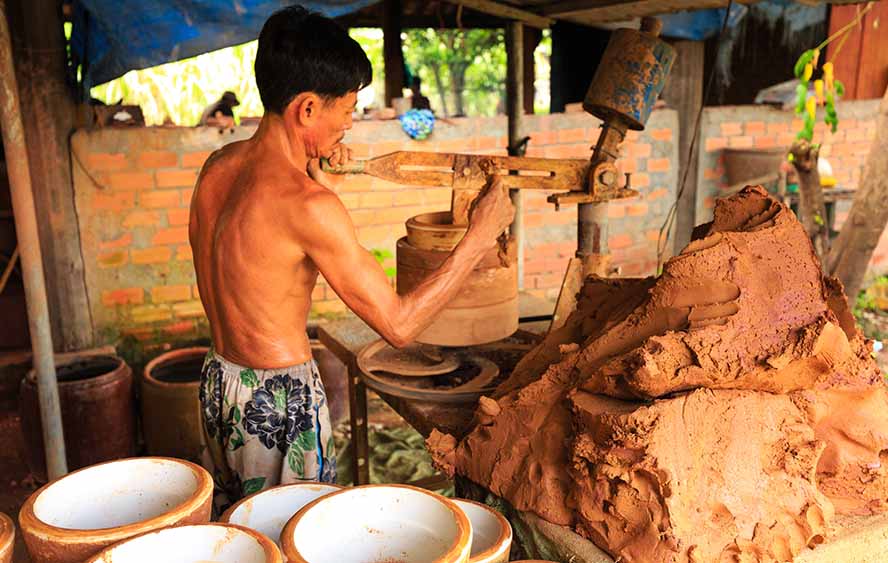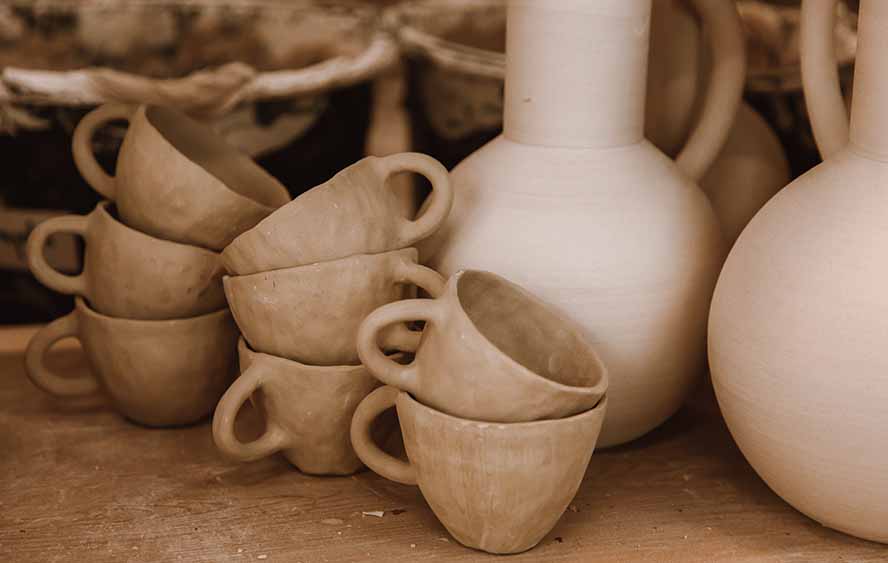Are your creations not tuning out right?
Perhaps you’re a newbie in pottery and are unsure where to start.
Either way, your first step should always be choosing your clay. This is a very important step because if you start off with the wrong clay, it can make learning pottery so much harder.
There have been people who were so excited about trying out pottery that they just bought the first type of clay they saw on Amazon or Walmart. This resulted in a lot of failed projects and eventually, giving up on the medium altogether.
Well, we’re here to make your pottery experience so much easier by talking about one of the best types of clays to start off with: Earthenware clay!
What is it, how do you use it, and where can you find it? Let’s talk about that!
What is Earthenware Clay?

Earthenware clays are some of the earliest clays used by potters and remain the most common type of clay found. Because it’s so easily accessible, earthenware clays are perfect for beginner potters who are not looking to put too much time and money into the medium.
Earthenware is traditionally made from ‘red earthenware’ clay or ‘red terra-cotta’ clay. But some earthenware clays can be buff, grey, or white.
Earthenware clays contain iron and other mineral impurities which is the reason why the clay can reach its optimum hardness at lower temperatures, between 1745°F and 2012°F (950°C and 1100°C).
You will find many items made using earthenware clay. Some examples are pots, building bricks, roof tiles, and some dinnerware.
Many brick-building in England were constructed using earthenware bricks. So it shows just how versatile these clay materials can be.
The Benefits of Using Earthenware Clay
Some of the main reasons why earthenware clay is a great started for pottery newbies are:
- It is very plastic and can hold its shape without needing too much water
- It is one of the most accessible clays in the market
- If you add grog (a type of clay fillter), it becomes even more workable
The Cons of Earthenware Clay
While earthenware clay can be easy to work with, it doesn’t come without its drawbacks:
- It is porous once fired
- It can chip easily despite being glazed and sealed
- Earthenware glaze is softer than most glazes and can easily get scratched up
- Earthenware pottery can easily crack or break simply from everyday use
How is Earthenware Clay Made?
A general body formulation for contemporary earthenware is 25% kaolin, 25% ball clay, 35% quartz, and 15% feldspar.
But some potters add other mixtures such as redart, wollastonite, pyrax, and bentonite into their clay, to change the colors, or make the earthenware clays easier to shape, mold, and yield stronger earthenware products.
As a beginner, you won’t have to worry about mixing and whatnot. You can get ready-to-mold earthenware clays from Blick or Amazon!
How Do You Use Earthenware Clay In Pottery?

Earthenware clay can be used in a variety of ways in pottery, but you have to be careful. This type of clay is well-known to be porous even after being fired.
It means that it’s unsuitable for cups, mugs, bowls, or anything that requires holding in liquid.
However, if treated with glaze, you can now use your creation to its fullest potential. Earthenware articles may be as thick and heavy or as thin as porcelain.
But don’t forget: earthenware clays can chip easily, so it’s best to use them for non-eating-related items like vases, jewelry bowls, figurines, and flower pots!
Styles of Earthenware Pottery
Earthenware pottery is an umbrella term used to refer to a wide number of pottery styles. Here are a few examples:
Slipware
- Sleepwear is earthenware pottery that has been decorated using colored slips. A slip is a liquid clay used to add color and texture to pottery. The pottery is then coated with a transparent glaze.
Maiolica
- Maiolica is used to describe tin-glazed pottery. The tin glaze is a plain lead glaze containing tin oxide. The tin oxide is used to give the glaze an opaque white color.
Majolica
- Majolica is used in two different ways. One is where it is used interchangeably with Maiolica, and the other is to refer to a type of pottery that was developed in the late 19th century.
Majolica often had textures and designs molded on the surface. Colored glaze was then used to decorate these textured designs.
Creamware
- Creamware, from the name itself, is cream-colored earthenware clay that is painted with a transparent lead glaze. It was made from white clay that contained flint to protect it from cracks as it gets fired.
Characteristics of Earthenware Pottery
Before you decide if you want to proceed with earthenware pottery, let’s talk about some of the different characteristics and how these will affect the products you create:
Porosity
- Earthenware clay is a low fire clay, and it is not fired up to a temperature that causes vitrification, unlike stoneware and porcelain. Once fired, earthenware clay is still able to absorb moisture due to the pores not being filled up by glass.
Softness
- Another thing to remember about earthenware cay is its softness. It is more porous and less dense compares to stoneware and porcelain. This makes it a lot more prone to breaking or chipping from everyday use.
Glazing
- Glazing is an important step in earthenware pottery because it’s the main way to make your creations waterproof. Earthenware glazes are some of the softest glazes in every sense of the word. Meaning that it scratches more easily than high fire glazes.
Where Can You Get Earthenware Clay?
Luckily for you, earthenware clay is quite easy to find. So you can just walk in almost any Walmart branch in your area. A local pottery store may also e able to provide you with the clay and materials you may need.
If you don’t want to leave your home, you can order all the materials you will need from Blick or Amazon.
Conclusion
The success and quality of your products will depend heavily on the type of clay you are using.
As a newbie, it’s better if you start with the basics so you can get a “feel” on how pottery works. Just visit any of the stores we’ve mentioned to find the right materials for your pottery projects.
While we mostly talked about earthenware clays, there are a lot of other varieties to choose from, don’t hesitate to explore new forms of clay.
You may even find a new earthenware combination online. If so, we encourage you to give that a try. Good luck!

